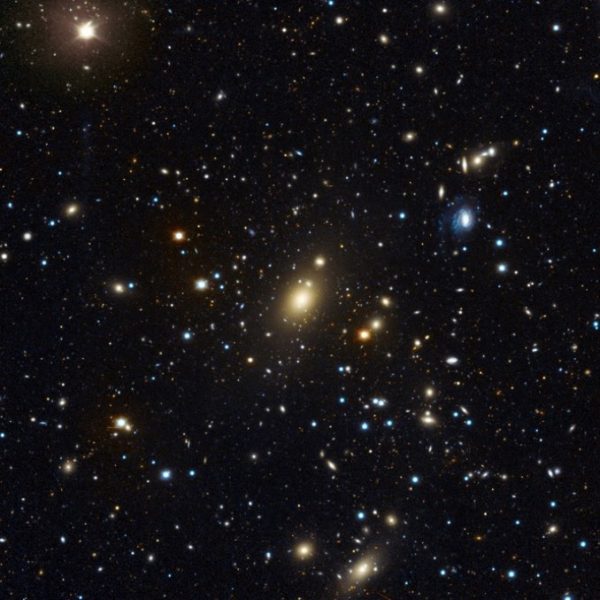Record-setting ultra-massive black hole found at heart of galaxy cluster – Astronomy Now Online

A monster black hole with 40 billion times the mass of the Sun – a new record – has been identified at the heart of a heavy-weight galaxy anchoring the Abell 85 galactic cluster some 700 million light years from Earth.
“There are only a few dozen direct mass measurements of supermassive black holes, and never before has it been attempted at such a distance,” said Jens Thomas, a researcher at the Max Planck Institute for Extraterrestrial Physics and the University Observatory Munich. “But we already had some idea of the size of the black bole in this particular galaxy, so we tried it.”
The black hole in question resides in the central galaxy of Abell 85, a cluster made up of more than 500 discernible galaxies. The one hosting the ultra-massive black hole has a visible mass of about two trillion suns and a diffuse central region almost the size of the Large Magellanic Cloud – a clue that an enormous black hole might be present.
Using the MUSE instrument on the European Southern Observatory’s Very Large Telescope, along with data from the USM Wendelstein observatory of the Ludwig-Maximilians University, researchers came up with a mass estimate based on direct measurements of stellar velocities in the galaxy’s core.
The data indicated the presence of a black hole with a mass of 40 billion suns.
“This is several times larger than expected from indirect measurements, such as the stellar mass or the velocity dispersion of the galaxy,” said Roberto Saglia, a senior scientist MPE and lecturer at the LMU.
The galaxy’s central regions exhibit a very low, very diffuse surface brightness, indicating most of the stars that once resided there have been expelled. That fits in with the commonly held view that the cores of such massive elliptical galaxies form through a process known as “core souring,” the result of gravitational interactions between the supermassive black holes of two merging galaxies.
“The newest generation of computer simulations of galaxy mergers gave us predictions that do indeed match the observed properties rather well,” said Jens Thomas, who helped develop the models used in the study. “These simulations include interactions between stars and a black hole binary, but the crucial ingredient is two elliptical galaxies that already have depleted cores.
“This means that the shape of the light profile and the trajectories of the stars contain valuable archaeological information about the specific circumstances of core formation in this galaxy as well as other very massive galaxies.”






